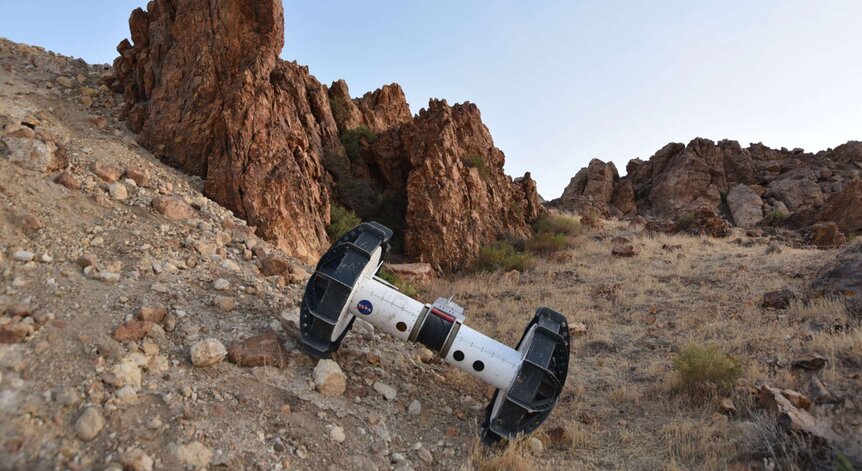Create a free profile to get unlimited access to exclusive videos, sweepstakes, and more!
NASA's Moon/Mars DuAxel rover shows off transformative skills in Mojave Desert field test

Rambling over rough terrain without a care in this world (or eventually any other), NASA's durable new four-wheeled rover called DuAxel just demonstrated its extreme agility over rocky ground cover in a fresh video that showcases the extreme machine's nifty functions.
A much-needed improvement over its clunky six-wheeled relatives, DuAxel has the ability to separate into two distinct two-wheeled units, and was engineered to tackle difficult landscapes on the Moon, Mars, and other cosmic destinations wherever they may be.
Its interesting transforming talents are accomplished by DuAxel adeptly anchoring itself to the ground, while a second single axle detaches to rappel its section down steep crater slopes, pits, scarps, vents, and near-vertical cliffs utilizing a thin attached cable.
Check out the new NASA video below for an example of the intrepid robot's agile skills in simulated environments:
These complex maneuvers were carried out during a Mojave Desert field test, as a crew of engineers from NASA's Jet Propulsion Laboratory in Southern California put the modular astro vehicle through a rigorous array of challenges to witness the efficiency and versatility of its design.
"DuAxel performed extremely well in the field, successfully demonstrating its ability to approach a challenging terrain, anchor, and then undock its tethered Axel rover," said Issa Nesnas, a JPL robotics technologist. "Axel then autonomously maneuvered down steep and rocky slopes, deploying its instruments without the necessity of a robotic arm.
"DuAxel opens up access to more extreme terrain on planetary bodies such as the Moon, Mars, Mercury, and possibly some icy worlds, like Jupiter's moon Europa," Nesnas notes.
Crafted from a pair of two-wheeled Axel rovers, NASA's DuAxel rambles along across even terrain until it encounters a severe incline or decline feature, then it halts, lowers its chassis and locks it into place, while it splits and the secondary stage uncouples via a spooled tether.
"The key advantage of using DuAxel is made clear when you have landing site uncertainty, such as we do on Mars, or you want to move to a new location to rappel and explore with Axel," explained Patrick McGarey, a robotic technologist at JPL and DuAxel team member. "It enables untethered driving from the landing site and allows for temporary anchoring to the terrain because it is essentially a transforming robot made for planetary exploration."
This four-wheeled arrangement is optimal for traveling long distances across hazardous landscapes, a benefit that bigger, bulkier rovers like Curiosity or Perseverance can't attempt without possibly tipping over or getting stuck traversing terrain with angles greater than 30 degrees.
Melding both mobility, flexibility, and efficiency in accessing hard-to-reach exotic locations is an attractive combination of features, and engineers are anxious to see what it does someday in an actual off-world scenario during an official mission.
"This is why I find the Axel rover to be quite delightful," said JPL planetary geologist Laura Kerber. "Instead of always trying to safeguard itself against dangers such as falling or flipping over, it is designed to withstand them."




























